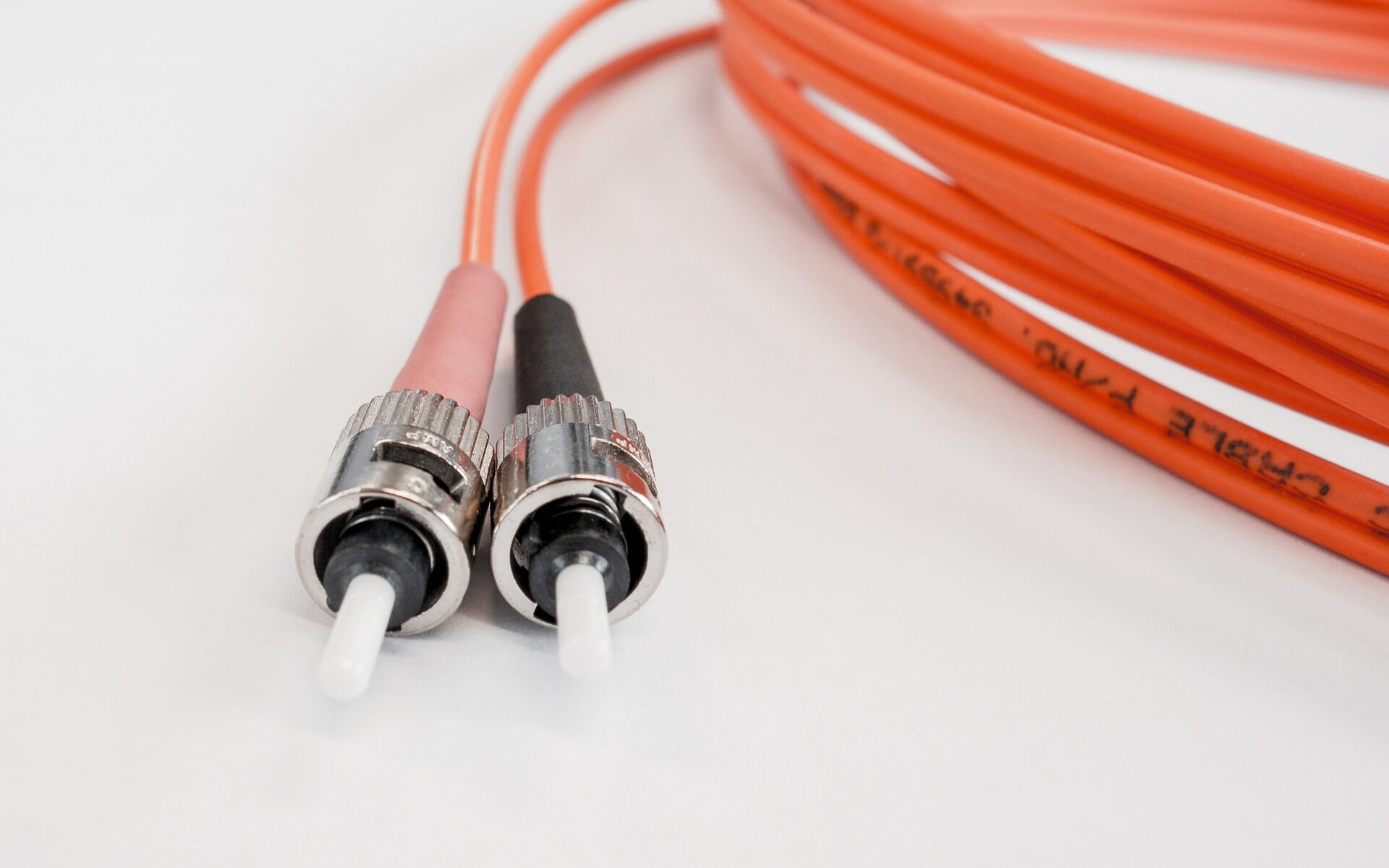Today in this article, we will try to talk about optical fiber in as much detail and as clear a way as possible. This method of communication is used not only in the Internet or communication networks, but also in industry, medicine and many other industries. In particular, we are talking about fiber-optic communication lines, or FOCL for short.
Otherwise and abbreviated, in the circles of the systems administrator in the IT engineers – also called as “Optics”, although this is not quite the right name. Fiber optics is a wire of very thin diameter with a round rod through which a beam of light transmits information. The wire itself is quite small in size. The length of the electromagnetic wave starts at 100 nm and ends at 1 mm. But more often the infrared range from 755 to 1550 nm is used.
Structure and Data Transmission
The structure is quite simple with the core itself in the center. Usually the core is made of quartz, glass or polymer fiber. Then there is the shell and the protective coating.
Light propagates according to Snellius law through total internal refraction. If we compare data transmission with twisted pair, the data transmission speed increases due to the frequency. There is also another benefit, namely the attenuation parameter. Fiber optic also has an attenuation parameter, but it is many times less than twisted pair.
Twisted pair at its maximum capabilities can transmit data at a distance of up to 100 meters. With more data being transmitted the distance may decrease. Also a plus is the immunity to electromagnetic interference. Twisted pair has such a structure that when transmitted without additional folded braid, the same information is transmitted over two wires at once. That is why it is called twisted pair.
As a result, at the end the signals are folded to eliminate interference. In optics, due to the transmission of a beam of light, no additional screen is needed. Also, due to the fact that in twisted pair information is transmitted by an electrical pulse, to increase the speed you need a thicker material with more resistance. The thickness of “optics” is many times less than standard network cable.
The very idea of an optical cable is to transmit coded information. The coding is in the form of zeros and ones – I think everyone knows about that. Unfortunately, computers and other similar devices can only understand such data so far. But in order to achieve maximum transmission distance the beam should be constantly reflected inside the core.
For this in the beginning they tried to use similar mirrors. Because of that the cost of such optical fiber would be incommensurably high. And then they came up with the idea of using a second layer. The principle is quite simple, the second layer has a different structure and density, due to which the light begins to be reflected.
Use for Internet transmission
Once upon a time, when I was young, and my beard was short and sparse, in our country was popular aDSL internet. That is, data transmission was precisely over telephone lines. As you may have guessed, the connection was terrible, and the maximum speed of the provider did not exceed 500 Kbit per second. Constant lags, high pings, interruptions and of course the exorbitant price of the Internet.
That is when everyone was waiting for fiber optic cable to be installed in our neck of the woods. At the time no one really knew what it was. It was expensive to even read about it on the Internet, as each megabyte was worth 2 rubles. The rumor was that with the advent of this technology the Internet would become cheaper and faster.
A few years passed, the speed increased, and the price became reasonable. Now the telephone cables were free, and the Internet was walking where it was supposed to be in the optical structure. At the moment in almost all regions and major cities – the Internet is transmitted by optical bundle. And to each apartment from the switches receivers go twisted pair.
Now the maximum speed over twisted pair cable reaches 1 Gbit per second. Of course, you can use more expensive cables like Cat. 7, but they are thicker, more expensive and not all equipment works with such wires. If you use 2 pairs or 4 wires, the speed reaches 100 Mbit per second. With 4 pairs or 8 wires, speeds can be 1 Gbit per second.
With optics, with a smaller wire diameter, the speed will be many times greater. Well, as said before, the reliability of the transmission will be higher. If you have ever pulled a network cable, you know that not every cable bundle can fit in it. Optics are more compact and they can safely withstand external impact and temperature changes.
Now providers are slowly transferring their customers to optics – that is, from the switch in the entrance hall there is no longer twisted pair, but “glass”. In practice, this can slightly reduce the speed loss, but in practice it will not give much advantage. On the other hand, when you connect a large enterprise, which actively uses the Internet or its corporate network – fiber optics can be a salvation when increasing the speed above 1 Gigabit.
Transmission speed and distance is a win-win for the “fiber optic”. But as engineers and chemists say – they are still working on the perfect core and shell. That way the natural attenuation of the electromagnetic light wave will be less and the reflection from the secondary material will be at a higher percentage.
